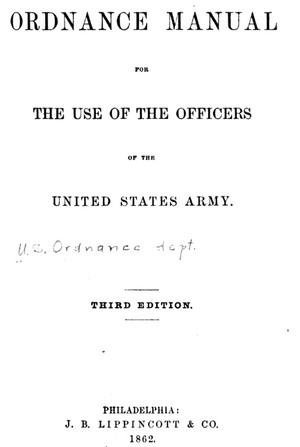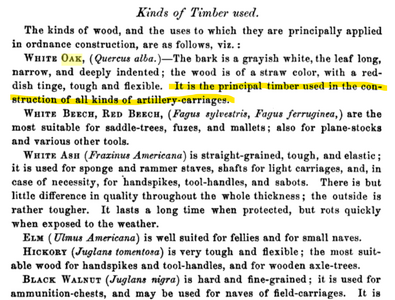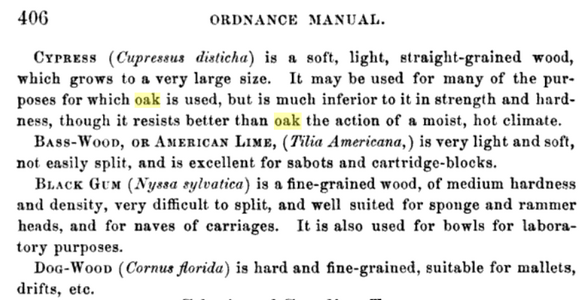-

Win a Free Custom Engraved Brass Coin!!!
As a way to introduce our brass coins to the community, we will raffle off a free coin during the month of August. Follow link ABOVE for instructions for entering.
You are using an out of date browser. It may not display this or other websites correctly.
You should upgrade or use an alternative browser.
You should upgrade or use an alternative browser.
Skip,
At least for English ordnance...... according to Adrian Caruana on page 358 of The History of English Sea Ordnance "The type of wood used in the sea service was almost invariably elm (the land service used oak) which has the advantage of having a grain that seldom runs true, and which consequently provides a degree of vertical support even when the grain theoretically runs horizontal, which due to the length of the gun it must." Keep in mind this varied with era and nation.
Hope this helps
Allan
At least for English ordnance...... according to Adrian Caruana on page 358 of The History of English Sea Ordnance "The type of wood used in the sea service was almost invariably elm (the land service used oak) which has the advantage of having a grain that seldom runs true, and which consequently provides a degree of vertical support even when the grain theoretically runs horizontal, which due to the length of the gun it must." Keep in mind this varied with era and nation.
Hope this helps
Allan
Last edited:
GreetingsMy son asked me this question. What was the most common wood used to build gun carriages?
Different types of guns require different types of timber used for carriages. Carriages were far different from filed, siege, and howitzer mounts. Mortar beds were in separate classes entirely.
The Spanish cheeks (1600's) often used Mahogany. At Jamestown, some used Cedar (there was a report), and French colonials used this timber. British specifications in the mid-18th century called for checks and transom of the dry Elm which was very pliable and and not likely to split, but some carriages were made from yang oak, and oak was a standard for the United States garrison carriages until it was replaced by wrought-iron after a Civil War.
Here's an 1862 Ordnance Department breakdown




The basic structure of carriages were of elm, chosen for its ability to absorb shock and its resistance to splintering when struck by enemy shot
Greetings
Different types of guns require different types of timber used for carriages. Carriages were far different from filed, siege, and howitzer mounts. Mortar beds were in separate classes entirely.
The Spanish cheeks (1600's) often used Mahogany. At Jamestown, some used Cedar (there was a report), and French colonials used this timber. British specifications in the mid-18th century called for checks and transom of the dry Elm which was very pliable and and not likely to split, but some carriages were made from yang oak, and oak was a standard for the United States garrison carriages until it was replaced by wrought-iron after a Civil War.
Here's an 1862 Ordnance Department breakdown
View attachment 462613
View attachment 462612
View attachment 462615
View attachment 462614



